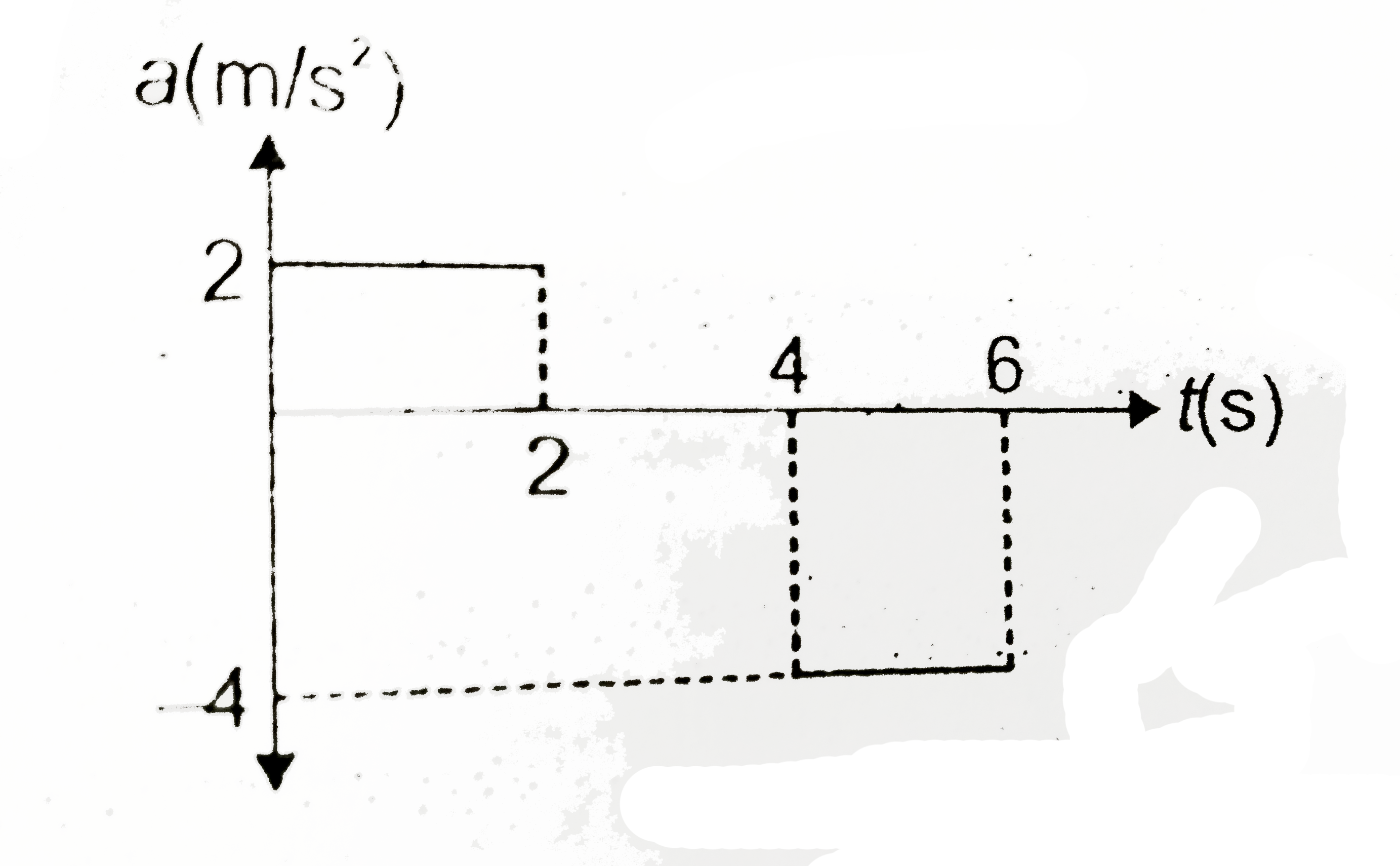A particle moving with a constant acceleration describes in the last second of its motion 9/25th of the whole distance. If it starts from rest, how long is the particle in motion and through what distance does it move if it describes 6 cm in the first sec.?
5 s, 150 cm
10 s, 150 cm
15 s, 100 cm
None
The correct Answer is:A
To solve the problem step by step, we will use the equations of motion under constant acceleration.
Step 1: Understand the given information
- The particle starts from rest, so the initial velocity u=0.
- The distance covered in the last second of motion is 925 of the total distance.
- The distance covered in the first second is 6cm.
Step 2: Set up the equations
Let t0 be the total time of motion, and S be the total distance covered.
From the equations of motion, the total distance S covered in t0 seconds is given by:
S=ut0+12at20=12at20(since u=0)
The distance covered in the last second can be expressed using the formula for distance covered in the n-th second:
Sn=u+12a(2n−1)=12a(2t0−1)(for n=t0)
Step 3: Relate the last second distance to the total distance
According to the problem, the distance covered in the last second is:
12a(2t0−1)=925S
Substituting S:
12a(2t0−1)=925(12at20)
Cancelling 12a from both sides (assuming a≠0):
2t0−1=925t20
Step 4: Rearranging the equation
Rearranging gives:
9t20−50t0+25=0
Step 5: Solve the quadratic equation
Using the quadratic formula t0=−b±√b2−4ac2a:
Here, a=9,b=−50,c=25:
t0=50±√(−50)2−4⋅9⋅252⋅9
Calculating the discriminant:
t0=50±√2500−90018=50±√160018=50±4018
Calculating the two possible values:
1. t0=9018=5
2. t0=1018=59 (not physically meaningful since time cannot be negative)
Thus, t0=5s.
Step 6: Calculate the acceleration
Using the distance covered in the first second:
S1=u+12a(2⋅1−1)=12a=6cm
Thus, a=12cm/s2.
Step 7: Calculate the total distance
Now, substituting a and t0 into the total distance formula:
S=12at20=12⋅12⋅52=12⋅12⋅25=150cm
Final Answer
- The time of motion t0=5s
- The total distance covered S=150cm
- The particle starts from rest, so the initial velocity u=0.
- The distance covered in the last second of motion is 925 of the total distance.
- The distance covered in the first second is 6cm.
Let t0 be the total time of motion, and S be the total distance covered.
S=ut0+12at20=12at20(since u=0)
Sn=u+12a(2n−1)=12a(2t0−1)(for n=t0)
According to the problem, the distance covered in the last second is:
12a(2t0−1)=925S
Substituting S:
12a(2t0−1)=925(12at20)
Cancelling 12a from both sides (assuming a≠0):
2t0−1=925t20
Rearranging gives:
9t20−50t0+25=0
Using the quadratic formula t0=−b±√b2−4ac2a:
Here, a=9,b=−50,c=25:
t0=50±√(−50)2−4⋅9⋅252⋅9
Calculating the discriminant:
t0=50±√2500−90018=50±√160018=50±4018
Calculating the two possible values:
1. t0=9018=5
2. t0=1018=59 (not physically meaningful since time cannot be negative)
Using the distance covered in the first second:
S1=u+12a(2⋅1−1)=12a=6cm
Thus, a=12cm/s2.
Now, substituting a and t0 into the total distance formula:
S=12at20=12⋅12⋅52=12⋅12⋅25=150cm
- The time of motion t0=5s
- The total distance covered S=150cm
Topper's Solved these Questions
- MOTION IN A STRAIGHT LINE BOOK - AAKASH SERIESCHAPTER - MOTION IN A STRAIGHT LINE EXERCISE - PRACTICE EXERCISE
58 Videos
- MOTION IN A STRAIGHT LINE BOOK - AAKASH SERIESCHAPTER - MOTION IN A STRAIGHT LINE EXERCISE - problems
47 Videos
- MOTION IN A STRAIGHT LINE BOOK - AAKASH SERIESCHAPTER - MOTION IN A STRAIGHT LINE EXERCISE - EXERCISE -I
58 Videos
- MOTION IN A PLANEBOOK - AAKASH SERIESCHAPTER - MOTION IN A PLANEEXERCISE - QUESTION FOR DESCRIPTIVE ANSWER
7 Videos
- MOVING CHARGES AND MAGNETISMBOOK - AAKASH SERIESCHAPTER - MOVING CHARGES AND MAGNETISMEXERCISE - EXERCISE-III
49 Videos
Similar Questions
A particle starts moving with acceleration 2m/s2. Distance travelled by it in 5th half second is
View SolutionA body ,starting from rest and moving with constant acceleration,covers 10m in the first second.Find the distance travelled by it in the next second.
View SolutionA trolley moves down a slope from rest with constant acceleration. In the first second of its motion it travels 1.6 m. Its acceleration (in m/s2) is
View SolutionMoving with a uniform acceleration from the state of rest a body covers 22 m during the 6th sec of its motion. What is the distance covered by if during the first 6 sec?
View SolutionA particle starts from rest and moves with constant acceleration. Then velocity displacement curve is:
View SolutionA particle moves rectilinearly with initial velocity u and constant acceleration a. Find the average velocity of the particle in a time interval from t=0 to t=t second of its motion.
View SolutionA particle starts moving from position of rest under a constant acceleration. If it travels a distance x in t second, what distance will it travel in next t second?
View SolutionA particle starts from rest. Its acceleration is varying with time as shown in the figure. When the particle comes to rest, its distance from its starting point is

View SolutionA particle is moving along a straight line with constant acceleration. At the end of tenth second its velocity becomes 20m/s and tenth second it travels a distance od 10m. Then the acceleration of the particle will be.
View SolutionA particle moves in a straight line with a constant acceleration. Its velocity changes from 20ms−1 to 35ms−1 while passing through a distance 150m in t seconds. The value of t is.
View Solution
